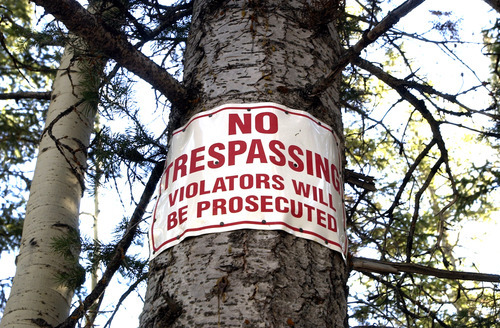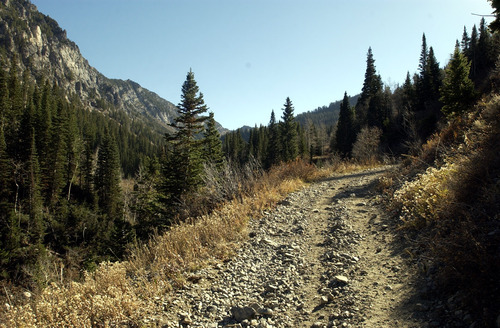This is an archived article that was published on sltrib.com in 2012, and information in the article may be outdated. It is provided only for personal research purposes and may not be reprinted.
Cardiff Fork has been the scene of some nasty confrontations in recent years between backcountry recreationists and owners of private property in this prominent side canyon off Big Cottonwood Canyon.
A major source of that friction may have been eliminated with a new agreement brokered by the U.S. Forest Service with the Cardiff Canyon Owners Association, whose 15 to 20 members own about 1,000 acres of the canyon above Doughnut Falls and the Reynolds Flat tubing area.
Through a special-use permit issued to the association, the Forest Service has secured a right of way for hikers and backcountry skiers to cross Cardiff Fork's scattered parcels of private land without fear of being challenged as trespassers.
In return, landowners will get year-round motorized access (including snowmobiles, dirt bikes and ATVs) to their properties along — but not off — the 2.8-mile dirt road in Cardiff Fork, also known as Mill D South Fork.
Property owners also will receive a waiver on land-use fees that were being increased from roughly $100 per owner to $450, said Cathy Kahlow, the district ranger who oversaw the negotiations for the Uinta-Wasatch-Cache National Forest.
"I'm really excited about turning over a new leaf up there," she said, noting that in the past few years "the whole thing got contentious and unreasonable to the point where people were threatening each other physically. It was not a good situation."
At least, not for anyone interested in the canyon, which boasts appealing terrain for hikers and backcountry skiers, is dotted with mines from a bygone age and is an important part of Salt Lake City's watershed.
Cardiff Canyon Owners Association President Wayne Crawford hailed the agreement as "a great benefit to backcountry skiers, hikers and recreationalists [that] strikes a very good balance between public recreation, private property rights and limited motorized use."
Renowned backcountry skier Andrew McLean praised it as a "good compromise for all involved," while Wasatch Mountain Club conservation director Will McCarvill lauded it as "an extremely positive step forward," one that he was "just astounded to see happen," given some of the animosities that existed.
"We have not organized any hikes or ski tours in Cardiff for probably the last five years or more because of the conflicts," he said. "We're probably going to have a trip up there this summer."
Having tracked the process fairly closely, McCarvill said he still has reservations about whether all of the recreationists and all of the landowners will abide by the "terms and spirit of the agreement."
"Hikers and skiers will have to understand that motorized-vehicle use is allowed for the landowners and have to be civil and accepting," he said. "It's also incumbent on the landowners to live within the restraints and to recognize that it does not give them carte blanche to take a [bulldozer] up there to open it up and pave it."
Laura Briefer, special-projects manager for Salt Lake City's Department of Public Utilities, is pleased an accord was reached but has similar concerns about how enforcement will be handled if new disputes arise between landowners and recreationists.
In addition, "we've seen some abuses to the landscape up there, particularly by some of the property owners," said Briefer, noting that Salt Lake City owns significant amounts of property in Cardiff Fork. "We hope this permit helps to educate those property owners to be good stewards. We'll wait and see how it ultimately works out."
The permit is for 10 years, but the property owners have a right to revoke the agreement in the first three years if things do not work out.
"Mutual respect between the public and landowners," Crawford said, "will go a long ways toward ensuring these privileges extend into the future."
Twitter: @sltribmikeg —
Cardiff Fork
Also known as Mill D South Fork, it is 8.8 miles up Big Cottonwood Canyon from the Salt Lake Valley floor.





